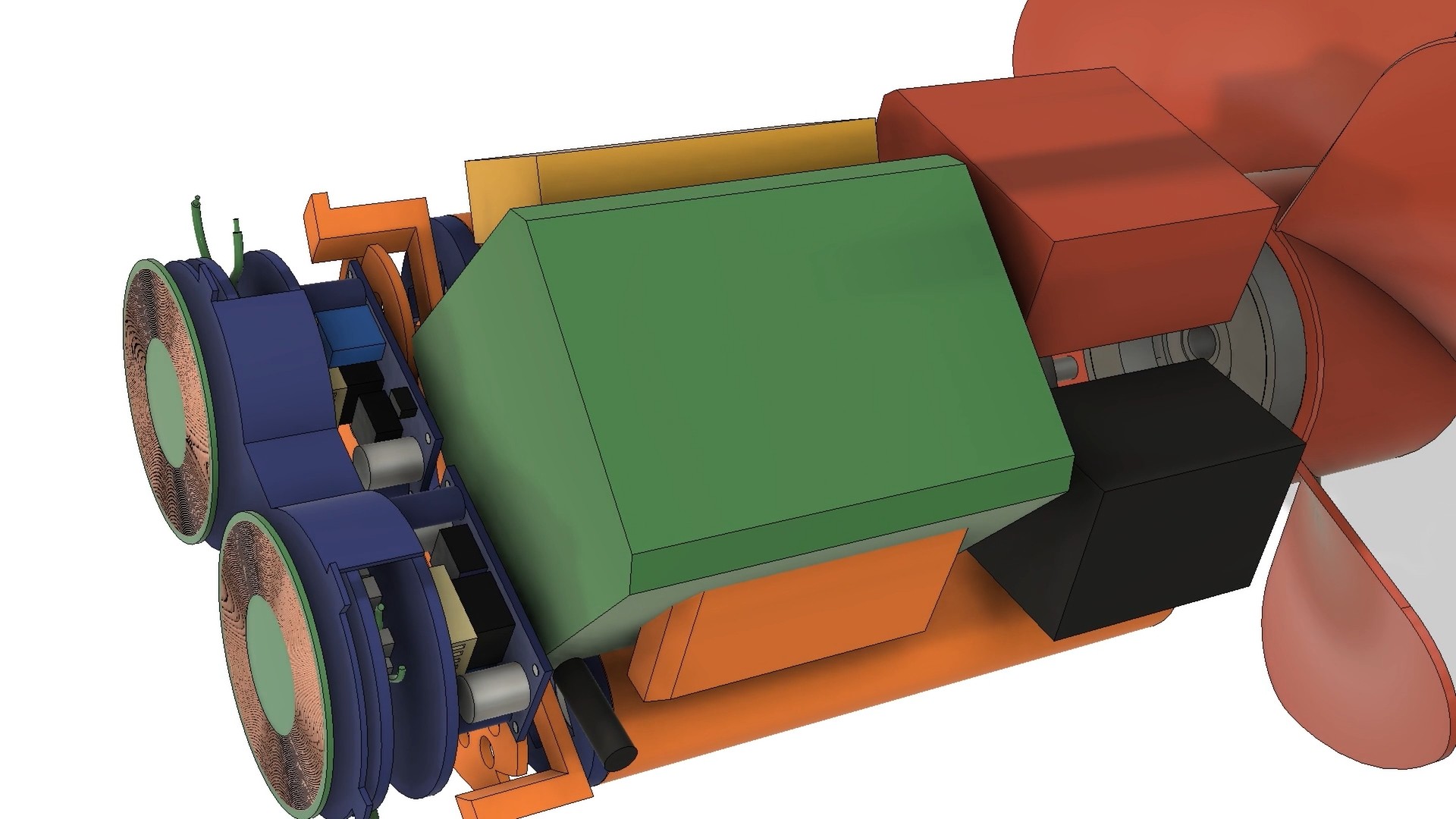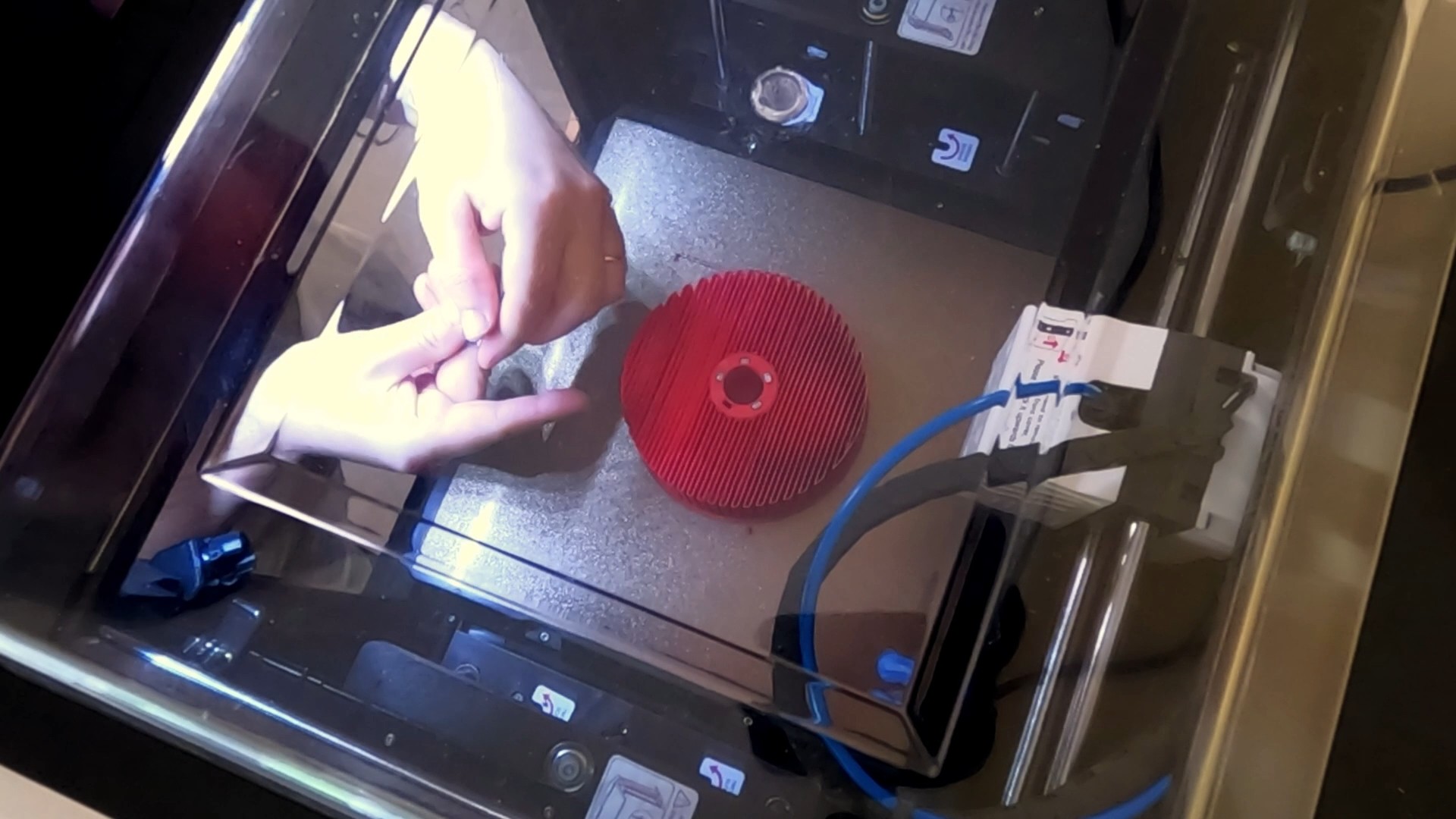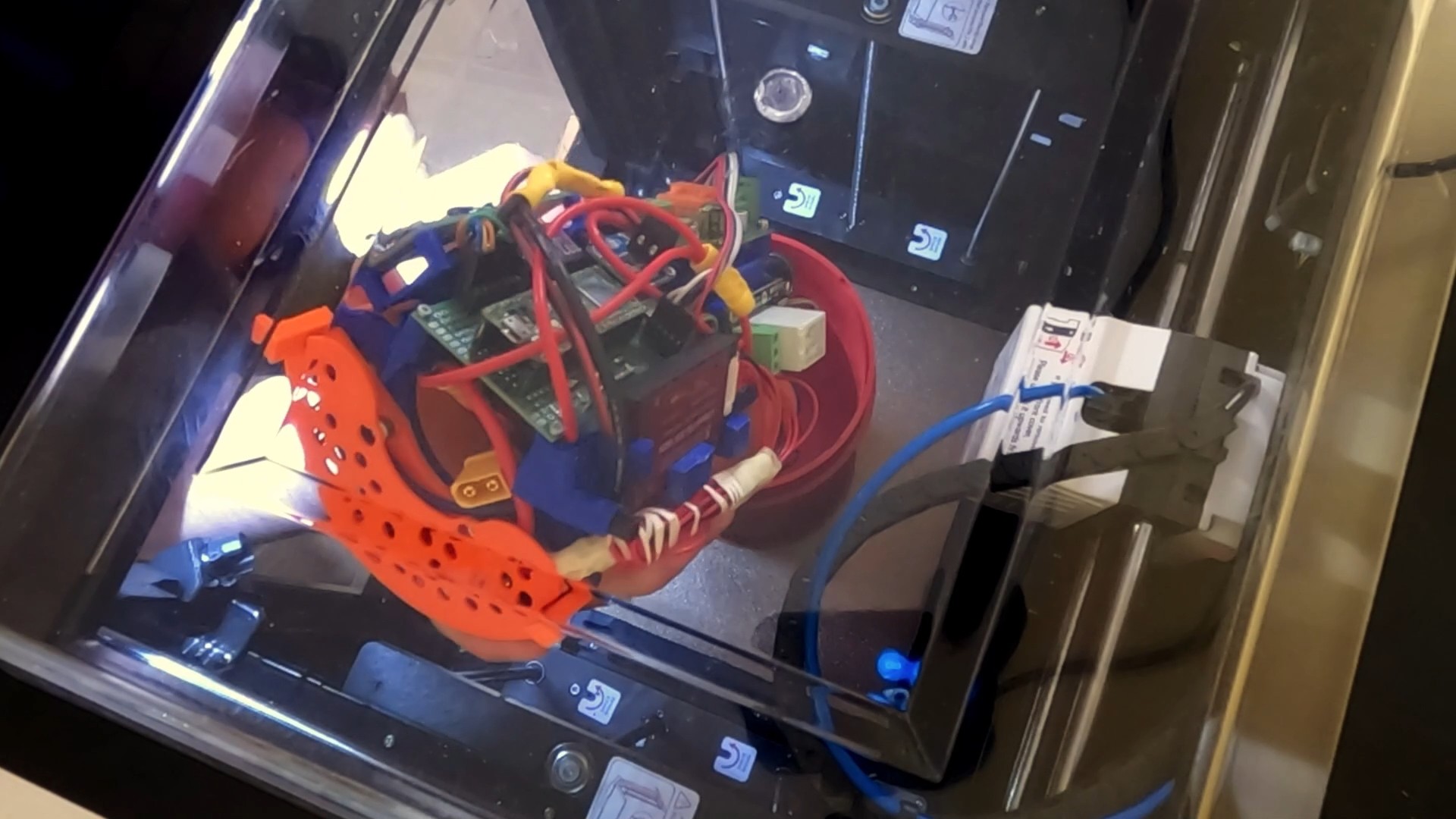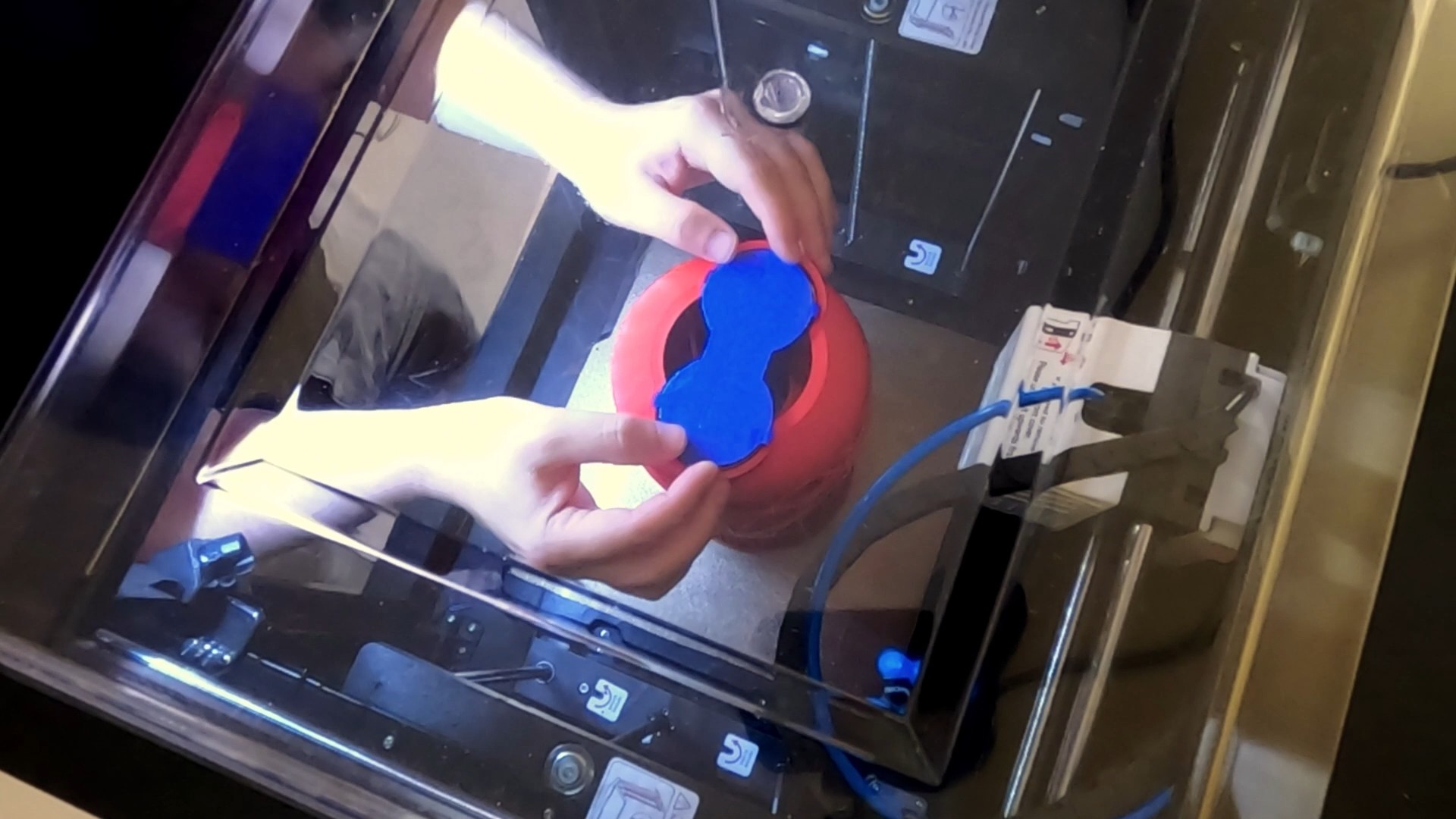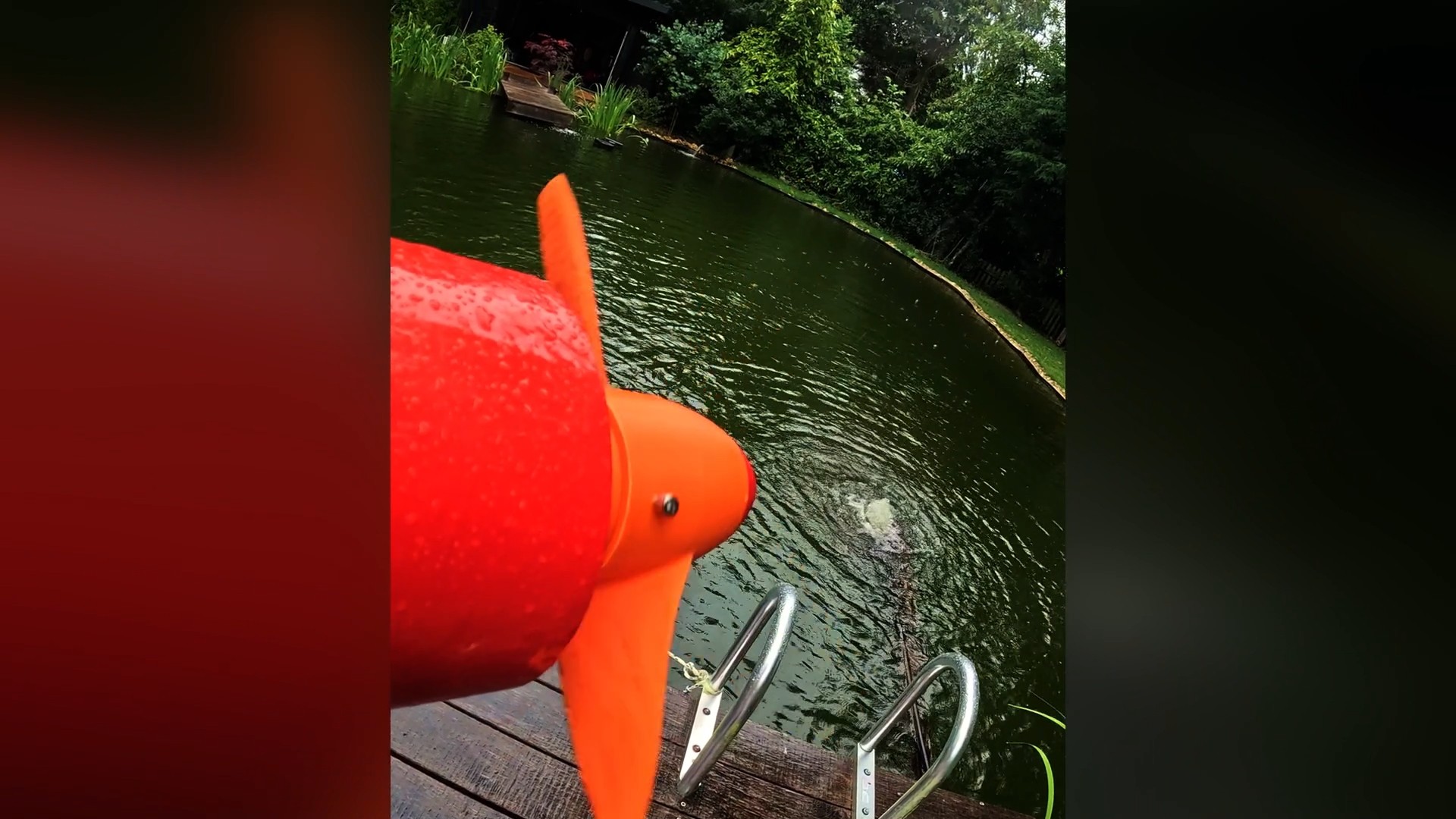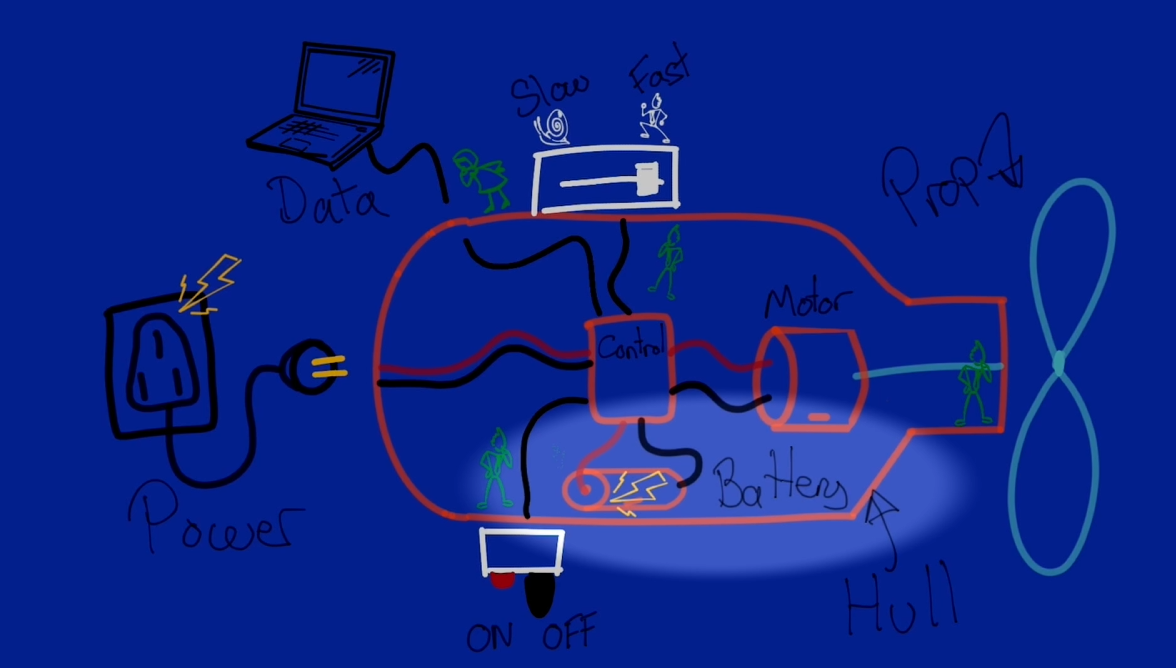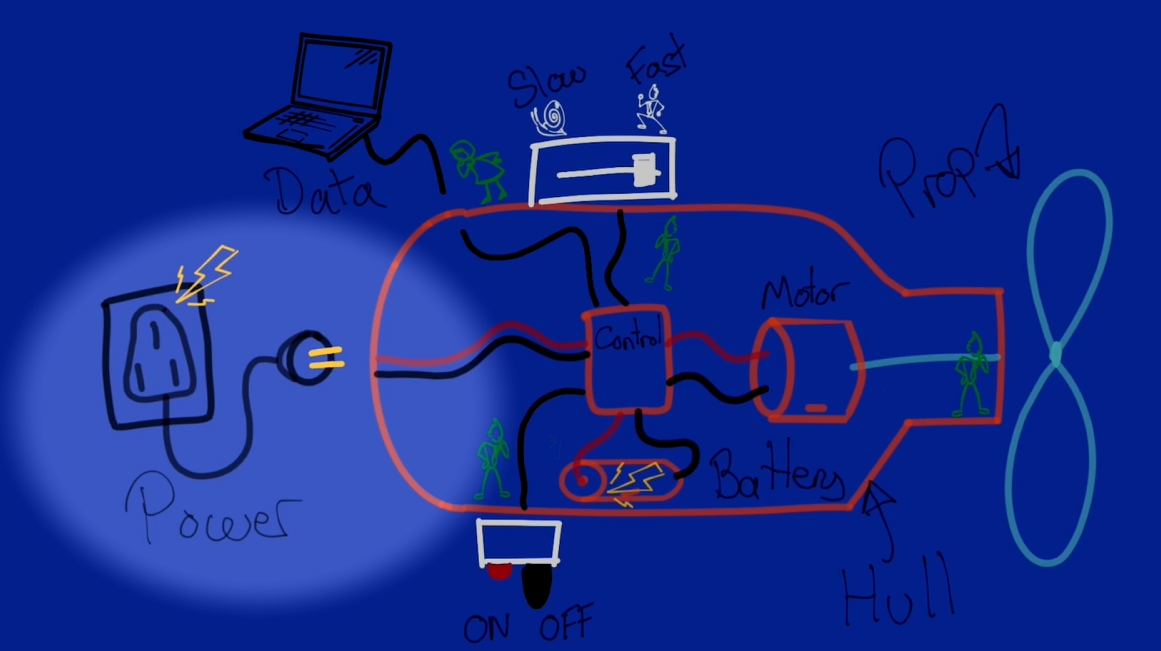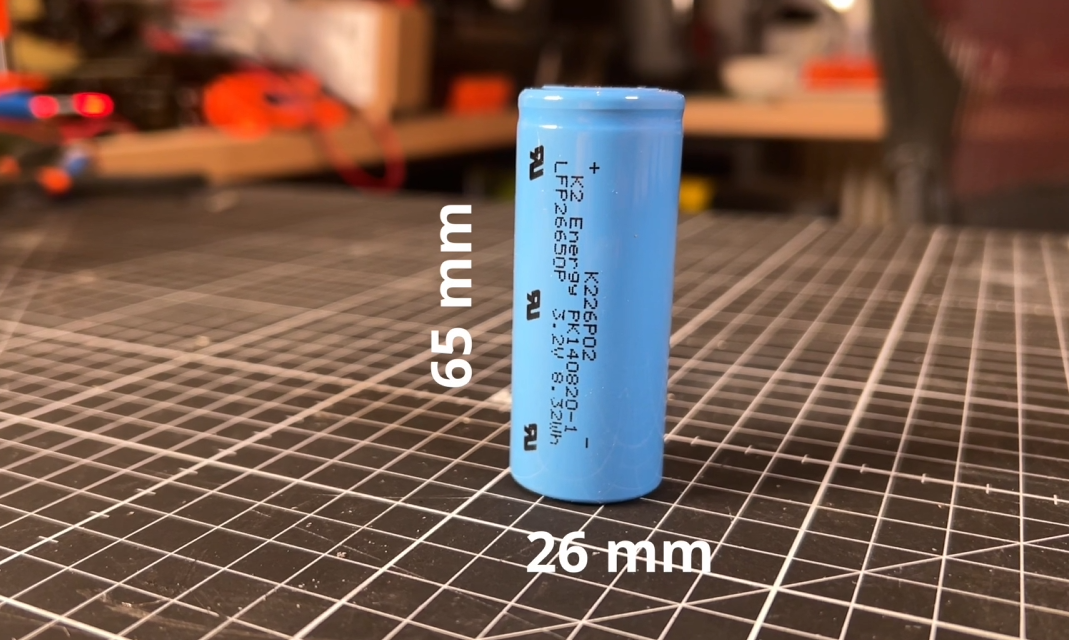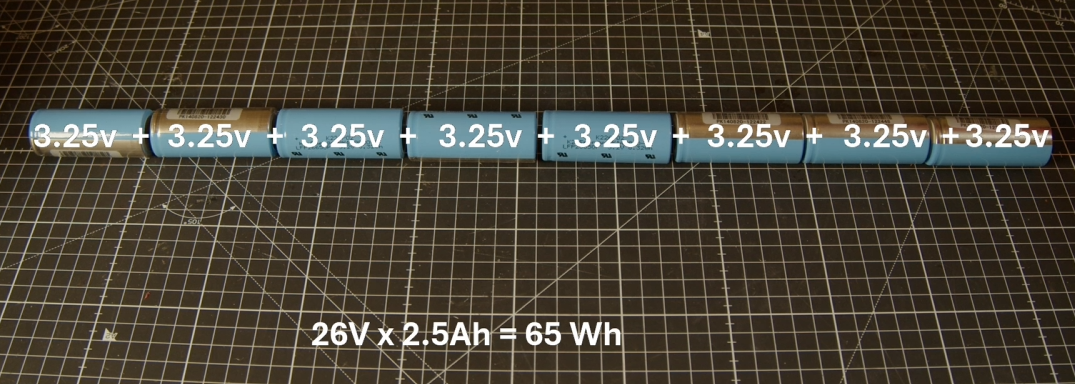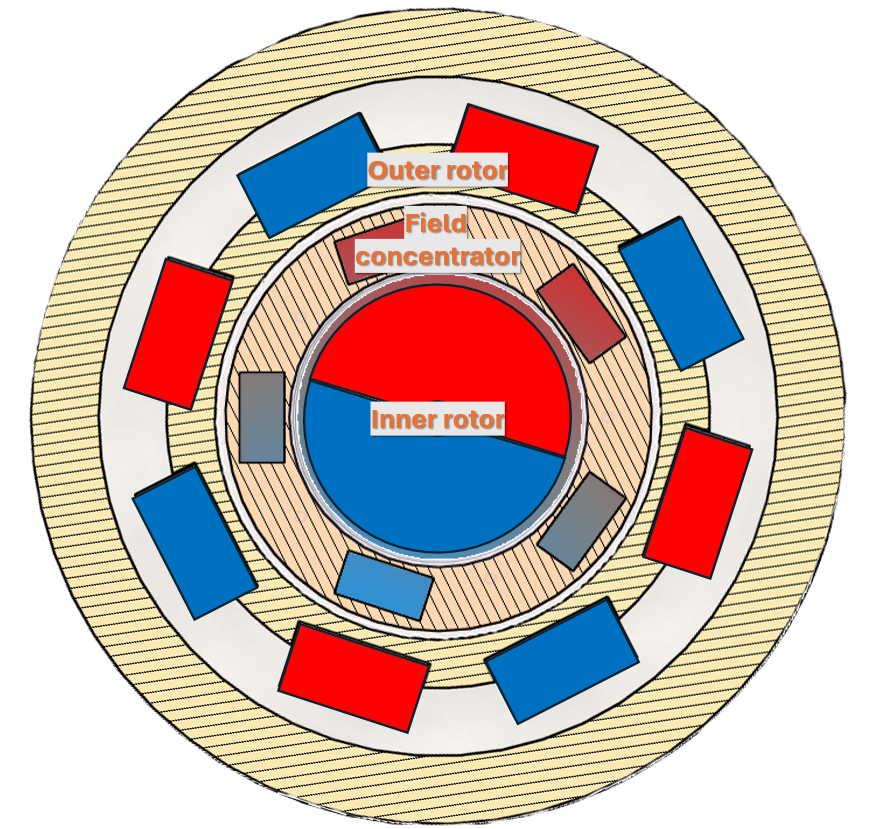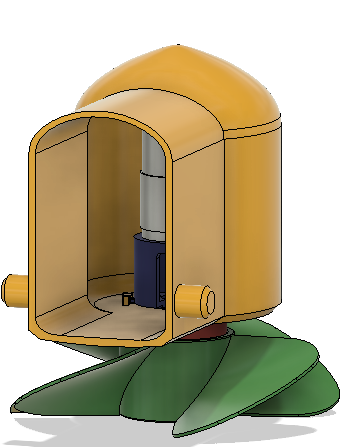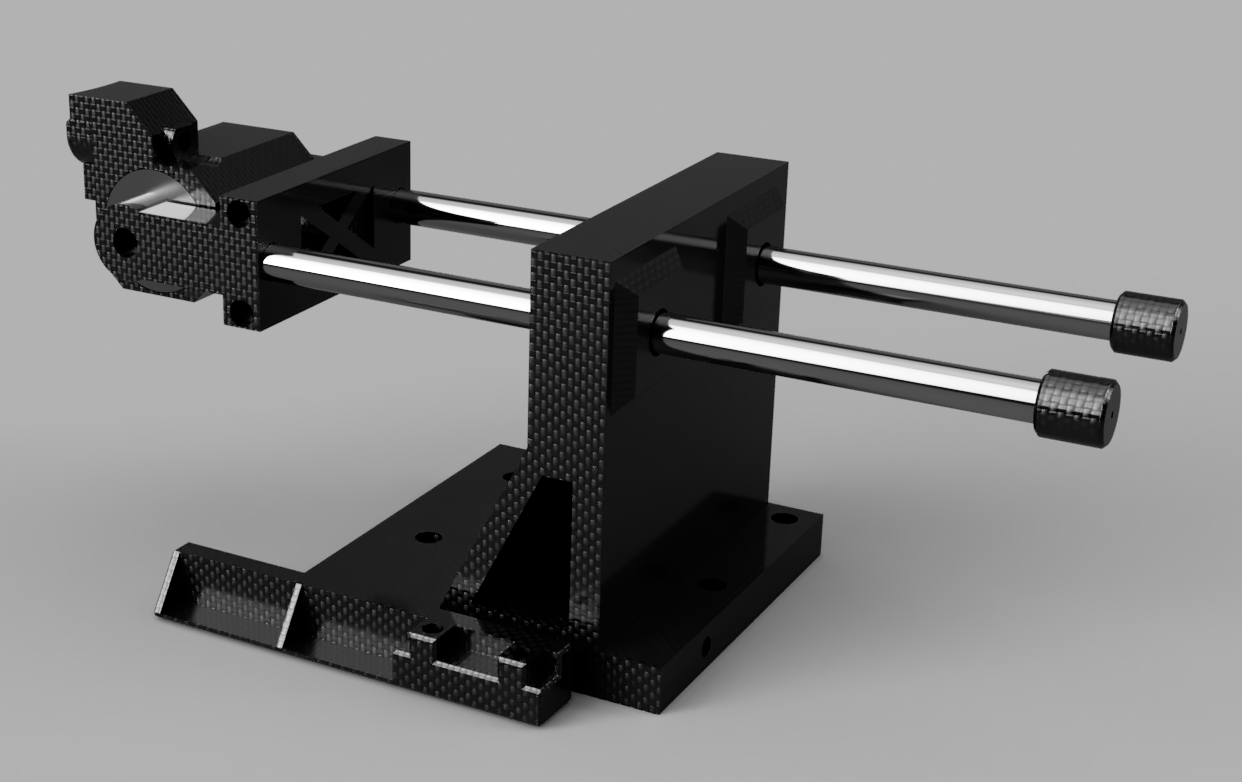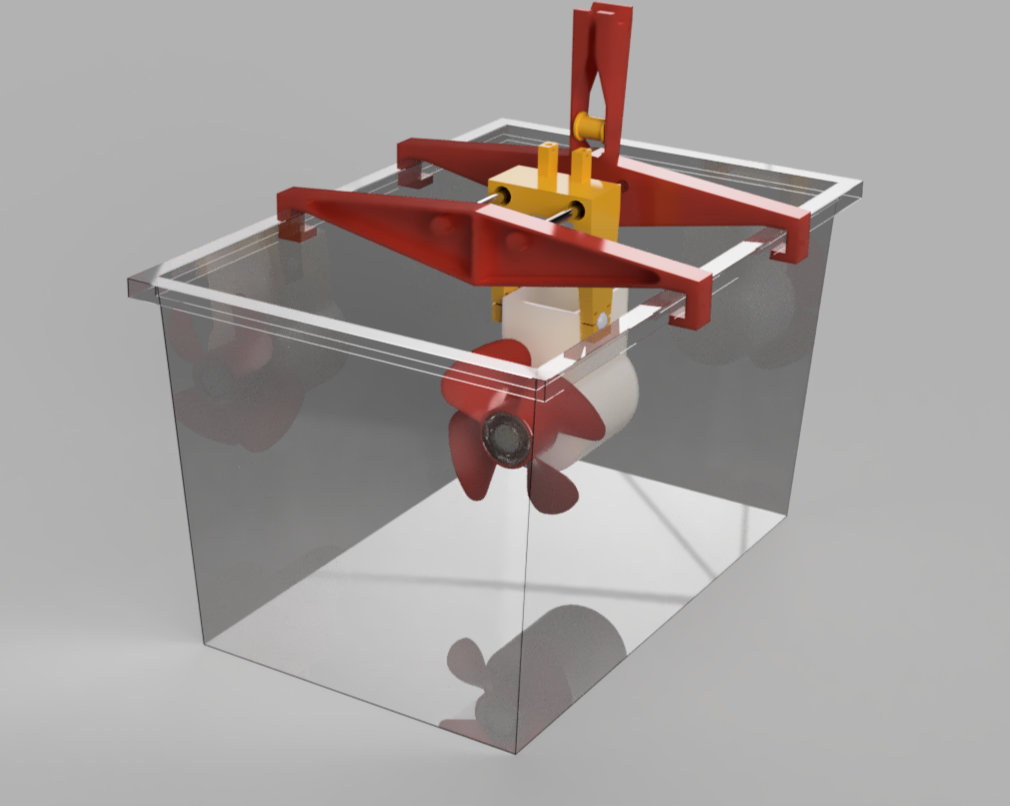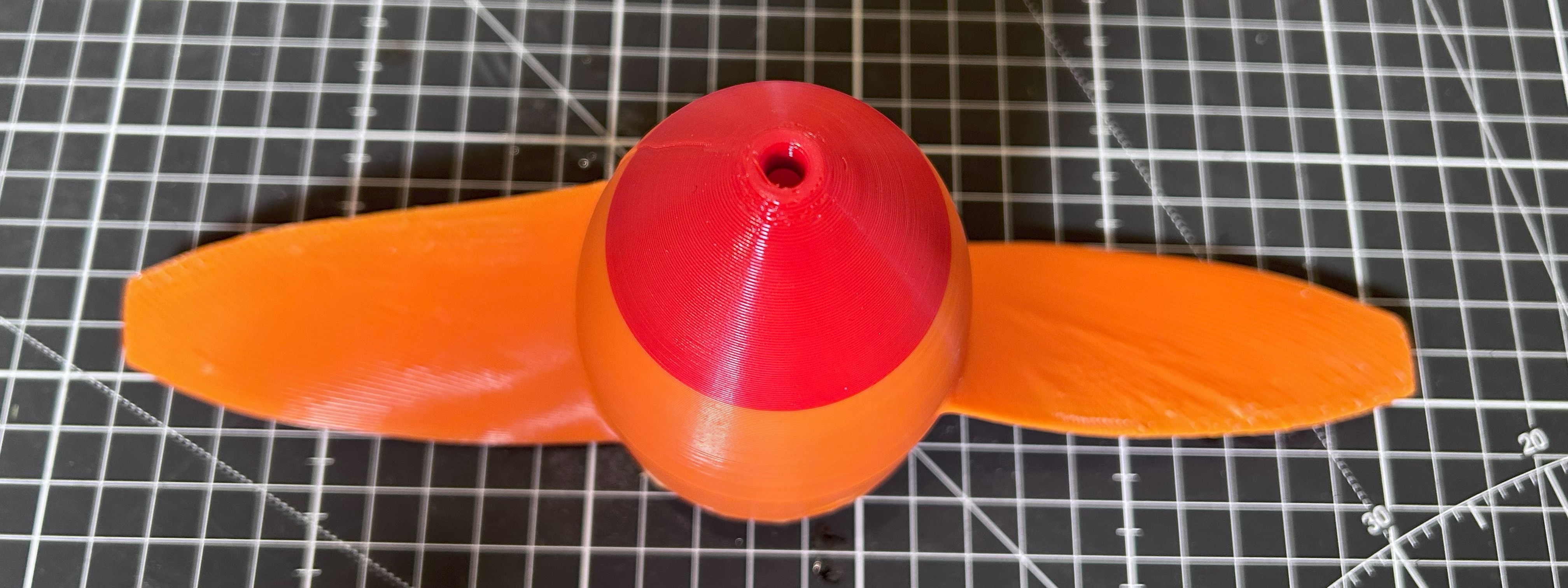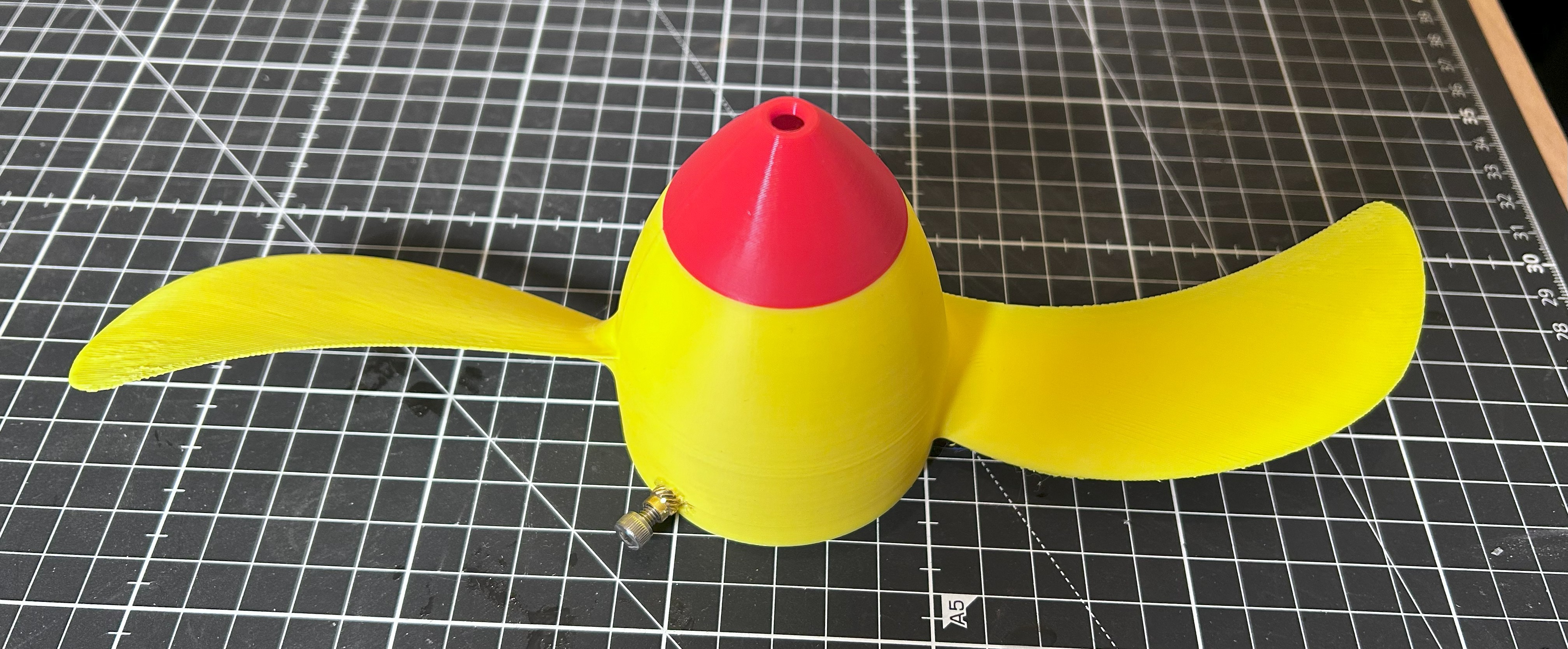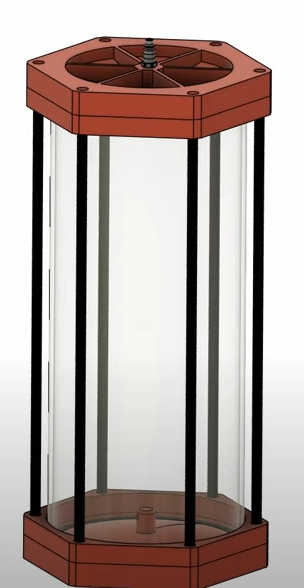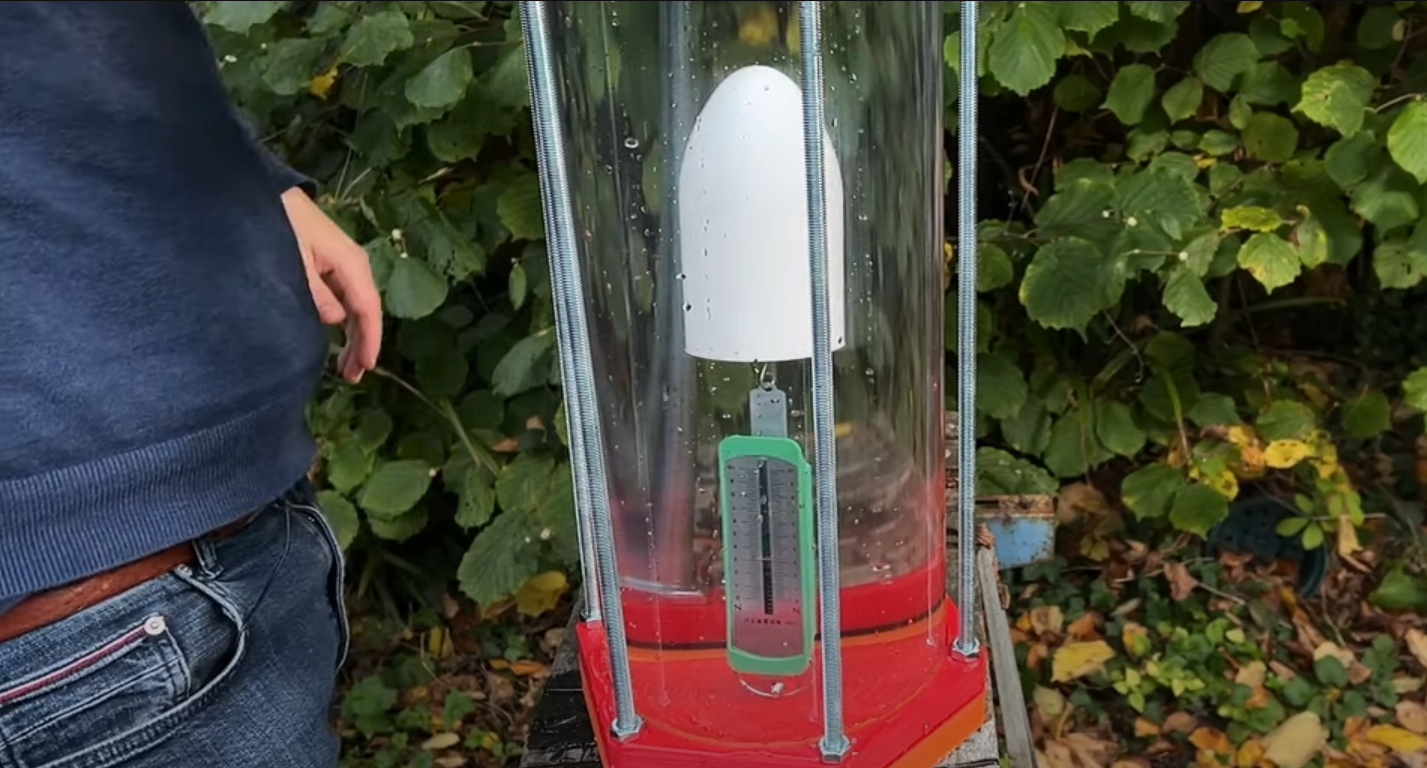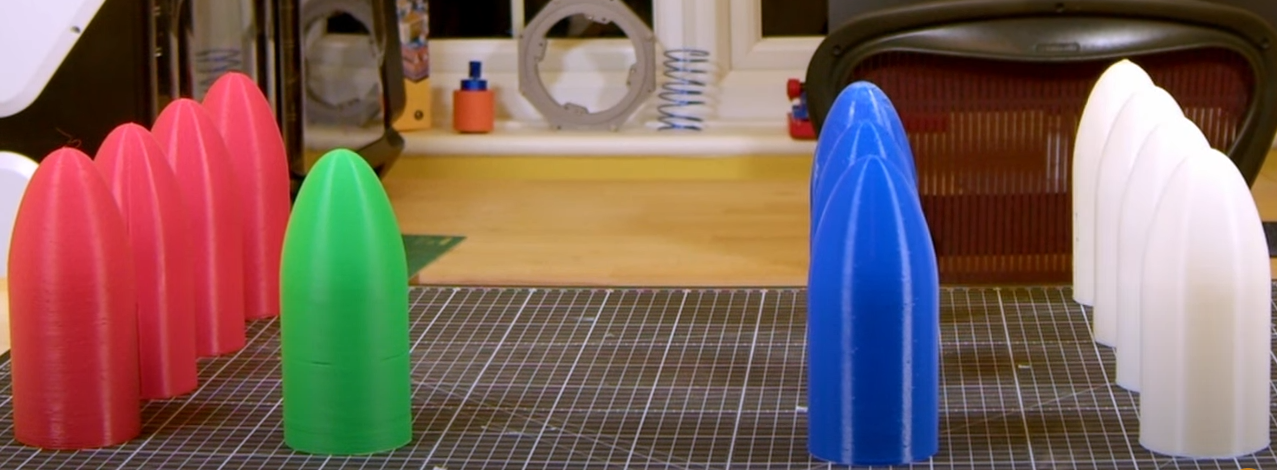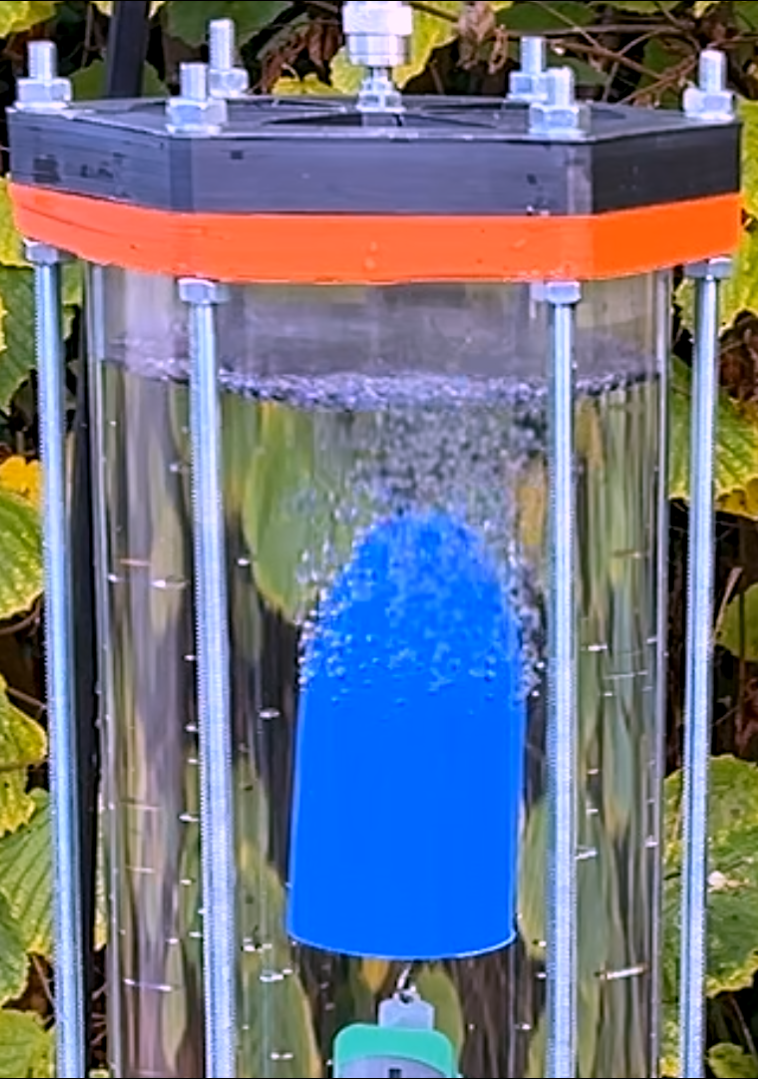This is the latest project I’ve been working on which I hope you’ll agree is kind of cool. If it works will really test the unique manufacturing design freedoms of fused filament 3D Printing.
The project started when I was day dreaming one, cold, wet day. Where I thought wouldn’t it be fun to design and make a underwater personal propulsion device, aka a sea scooter. With a few challenging design constraints thrown in to make it interesting and hopefully provide you with a source of inspiration for your next project.
The two main design constraints are:
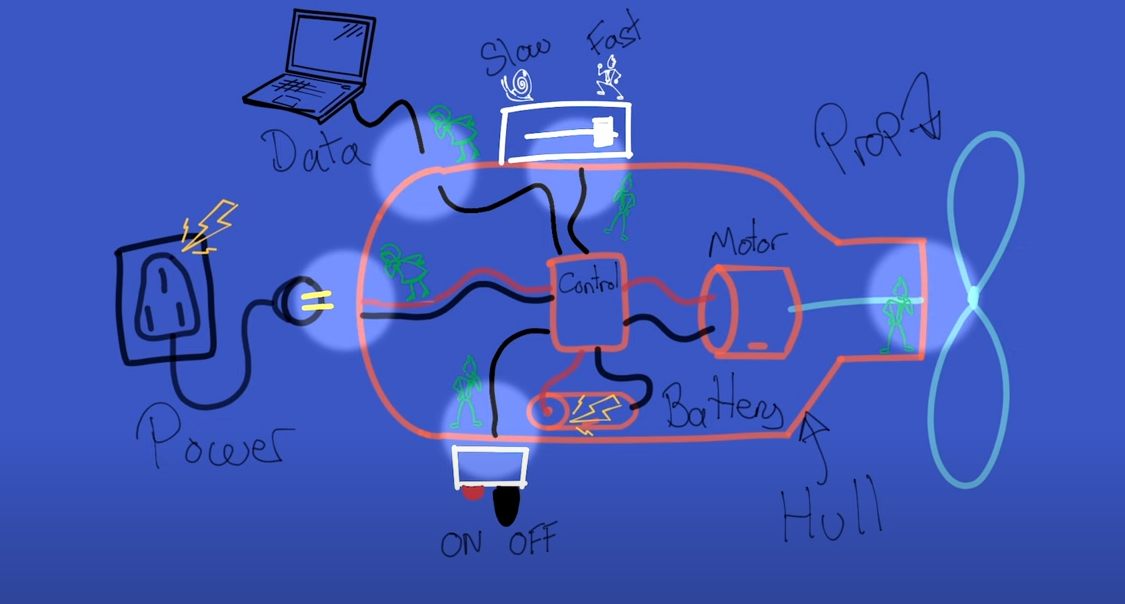
- The body of the sea scooter must be printable in one go as a single 3d print.
- How on earth can the electronics, batteries and drive system be added during the printing process?
- The body must be water proof and hermetically sealed with no holes for a motor shaft or cable connectors.
- How can I get power and control signals into and out of a system that has no physical connection to it’s outside environment and how can we drive a propeller if I cant make a hole for a shaft?
 Ben
Ben